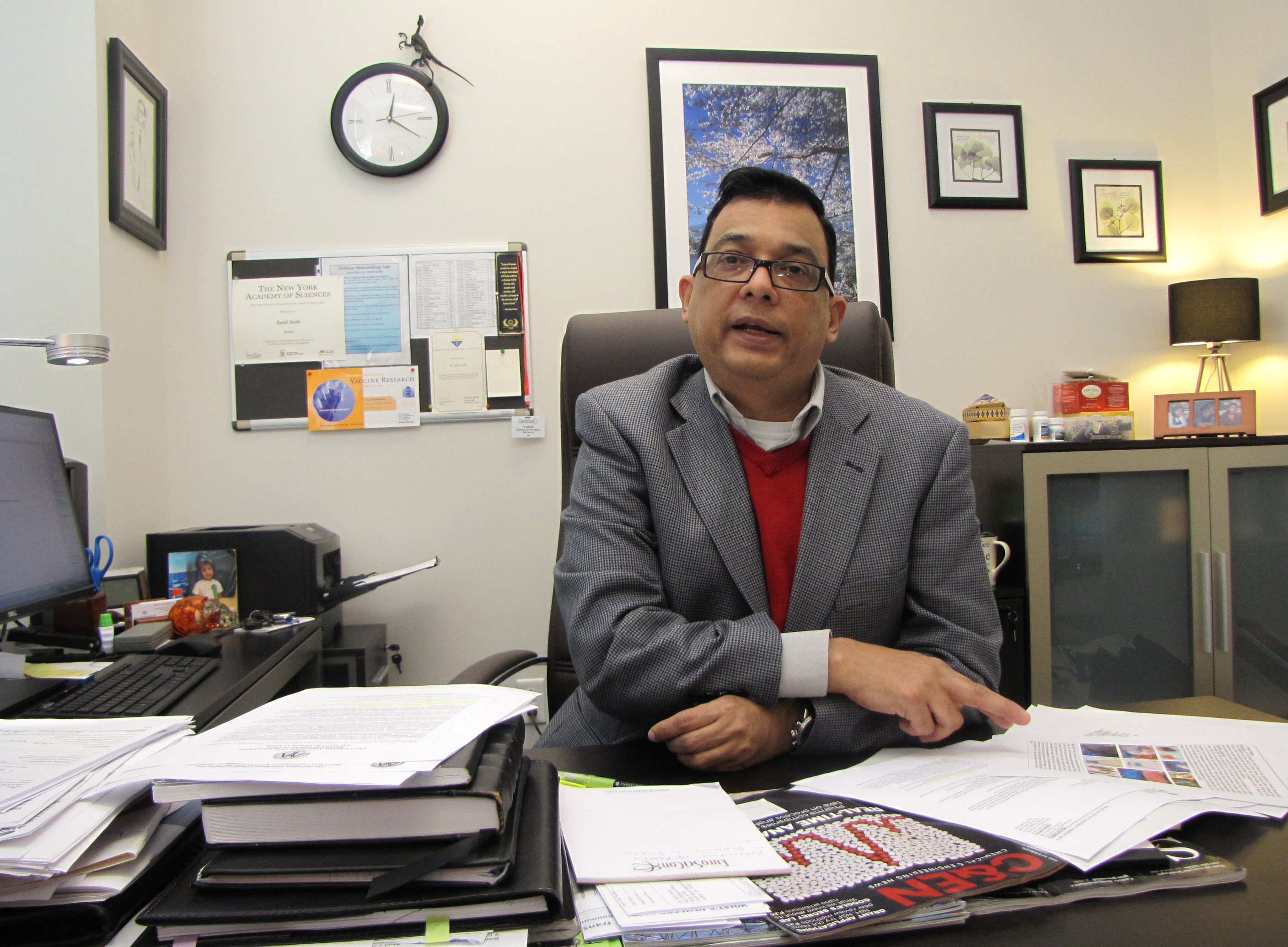ODU Researcher Looks Beneath the Skin for Potential Tattoo Risks
March 12, 2015
 Sunil K. Joshi
Sunil K. Joshi
The next time you ease into an ink-slinger's chair for a tattoo, you might want to consider what you're putting into your body, says Sunil K. Joshi, an assistant professor of cellular immunology at Old Dominion University.
Mercury. Lead. Titanium. Copper. Carbon.
These are but a few of the ingredients in the ink tattoo artists use. Despite the toxic nature of these elements, the practice is not regulated by the Food and Drug Administration or any federal agency.
"Not only are the pigments they use not regulated, but the chemicals that deliver these pigments to the skin are considered trade secrets. They could be alcohol, methanol, antifreeze, formaldehyde," said Joshi, who teaches at the University's Frank Reidy Research Center for Bioelectrics and the College of Health Sciences' School of Medical Diagnostic & Translational Sciences.
Joshi has embarked on a research project that will attempt to determine whether tattoos pose a significant threat to public health by suppressing the immune system and leaving the body vulnerable to opportunistic infections.
"What I plan to look at is the effect of the ink on the immune system," he says. "Eighty percent of the ink that is injected does not end up in the tattoo, but instead accumulates elsewhere in the body."
Once an art form commonly associated with fringe elements, tattoos have gone mainstream and that translates to big business.
Americans spend $1.6 billion annually on tattoos, according to a 2013 study by the Pew Research Center. It estimated the total number of Americans with at least one tattoo at 45 million. There are more than 21,000 tattoo parlors in the United States and artists can make upwards of $150 an hour on average for a large tattoo, the study stated.
In the 1930s and 1940s, Norfolk was famous for its tattoo parlors and sailors frequented shops that lined downtown's East Main Street.
By 1950, however, Norfolk banned the establishments, deeming them undesirable. Virginia Beach, Chesapeake and Portsmouth followed suit. But after about 50 years, South Hampton Roads slowly began to allow tattoo parlors to return: first Virginia Beach, then Chesapeake and Portsmouth. It wasn't until 2006 that Norfolk lifted its prohibition.
The FDA warns of infection, allergic reactions, granulomas and removal problems with tattoos. However, it does not list cancer as a potential risk, Joshi said, even though carbon used in black ink is a carcinogen.
In German studies performed on human cadavers with tattoos, most of the ink was found in the lymph nodes, which help to protect the body against infection by killing bacteria and neutralizing toxins.
The nanoparticles in tattoo ink are absorbed into cells through phagocytosis, a defensive mechanism against infection or the invasion of foreign substances. Leukocytes, or white blood cells, then take the nanoparticles to neighboring lymph nodes, where the ink collects and cannot be metabolized.
"It is a public health issue, because a person whose immune system is not functioning properly can allow for a virus to mutate and threaten others with a different, more resistant strain of the virus," he said.
Joshi added that, with no regulations, tattoo inks may contain chemicals that not only can cause mutations in infectious viruses, but birth defects or aggressive cancers.
In Joshi's preliminary tests with lab mice, injected in the foot with tattoo ink, necropsies revealed the migration of ink particles to nearby lymph nodes.
One of the frustrating aspects of the research, he said, is that there is nothing that can undo the potential damage once the tattoo is applied.
"Tattoo removal doesn't remove anything," Joshi said. "It merely masks the tattoo."
The process can be very expensive, painful and in some cases ineffective. It is also not covered by insurance, he added.
About a year ago, Joshi noticed that one of his laboratory staff members had a tattoo of a DNA strand running down her neck. He inquired about it and in an effort to further satisfy his curiosity, conducted a Google search on tattoos.
He found the German cadaver study and a light went off.
"I realized there was an urgent need for an extensive research investigation on the short-term and long-term health effects of tattooing," Joshi said, adding that he understands his findings may not receive a warm reception by some, but his search for the truth is far more important.
"The public has the right to know," he said. "Since I started looking into this, I've talked a few people out of getting tattoos."

